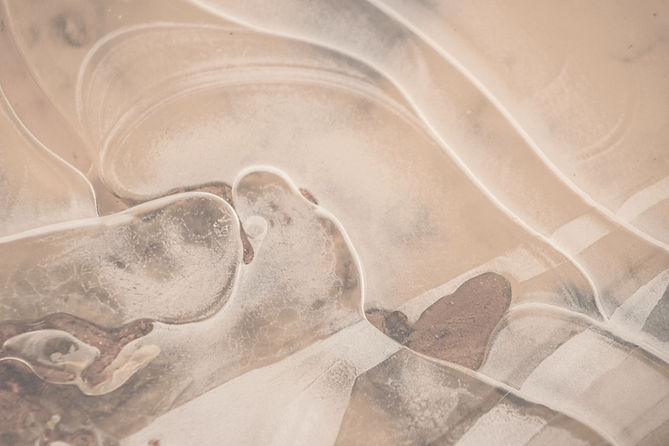
Gigi - Independent Study
This study mainly focuses on the innovative design of flexible wheels by G. Kim, H. Chung and B. -K. Cho in "MOBINN: Stair-Climbing Mobile Robot With Novel Flexible Wheels". The aim of the study is to find out the ideal stair-climbing design for an e-luggage.

Flexible Wheel Design
This pair of wheels consists of two components, a flexible ring on the outside that will be in contact with the ground, and a smaller rigid structure to hold the flexible ring.
Comparison with other stairs-climbing designs
The flexible wheel design is compared with other stair-climbing approaches, such as the rocker-bogie system and the tri-wheel cluster. After reviewing the rocker bogie design, it is found that it would be too bulky as it requires more structures in the system, which would bring more weight and wasted space to the luggage, especially when the luggage has 2 more wheels than a common 4-wheel system.
Another stair-climbing design that is more common in the market, is the tri-wheel cluster. It is easier to be manufactured and does not require much space or extra components. Therefore, a pair of tri-wheel clusters were bought and tested to compare the performance of these two wheel designs.
In the experiment, the two sets of wheels were installed onto the same luggage prototype, and the force required to lift up each step were measured with a spring measure as they were dragged on the stairs. However, the spring measure turned out to not be able to measure such high force, an extra spring is added in between the puller and the wheel handle, such that the change of length of the spring can be measured with a caliper, and the required force can be calculated.




The results are as follows:
Flexible wheels: 47.12N ; Tri-wheel cluster: 70.16N

It is found that the flexible wheel requires less effort to pull upstairs compared to the tri-wheel clusters. Moreover, the general experience is more smooth while the tri-wheel clusters gives a bumpy experience. The reason is probably due to the number of wheels in a tri-wheel cluster. There are only three small wheels, meaning that the luggage will have to rotate 120 degrees every time it goes up one stair. This will result in a large torque needed to travel through the stairs. In comparison, the flexible wheel has 8 loop structures in the outer ring, which gives an upward support to travel through stairs. Therefore the locus of the wheel movement would be much smoother, and the torque required will be lower. This experiment result aligns with the research paper that proposed this wheel design. This is a major advantage as it saves power of the motor along with the power consumption.
Requirements of the wheel design and the possible issues
There are two major requirements for the flexible wheel design. Firstly, the diameter of the wheel must be at least twice of the stairs that it travels. Another requirement is a rough surface of the outer flexible ring.
Given that most of the stairs are around 20 cm around the world, the diameter of the wheels will have to be at least 40 cm. This will require more consideration on the placement of the wheels. There are mainly 2 situations in which the wheels can be placed:
1. directly under the luggage
2. on the side of the luggage where the center of the wheels aligns with the luggage bottom
3. on the side of the luggage where only a few cm will be extended out the luggage bottom
In the first scenario, the luggage will be dramatically lifted up, leaving little space for storage. In the second scenario, the pressure asserted on the wheels and the support might be imbalanced and result in easily broken components. In the third scenario, the storage of the luggage will have to be divided in half as the connector of the wheels will need to go past the storage case.
Eventually, the second option was chosen, as we would not want to give up 50% of the storage, and placing the motor up in the middle of the luggage will cause undesired weight distribution.

Regarding the surface roughness requirement, it should not be a major issue as most of the stair-climbing designs have such requirement as well to avoid slipping. A layer of high friction surface can be added on the wheels in case the material has too little friction.
Material Choices
In the original design, the material for the flexible ring is styrene butadiene rubber due to its flexibility, slip resistance and near-linear stress-strain curve. Looking into a few possible material choices as an alternative of styrene butadiene rubber, TPU and silicone were figured to be a possible material for the prototype because they were easier to be manufactured. The Young’s modulus of styrene butadiene rubber is 4MPa, while silicone’s can be ranged from 0.517 to 62.1 GPa, and TPU 75A’s is around 162 MPa.
The large range of silicone makes a better case for the prototype, however the more tough the silicone is, the more brittle it is. As the flexible wheels will go under frequent compression, the fatigue resistance and the ductilability are also very important. As for TPU, the actual properties will be dependent on the 3D printing setting. However it is more costly to print a 37cm ring in one go with TPU.

TPU Wheel
Conclusion
By focusing on these key aspects, the study presents a comprehensive analysis of the MOBINN's flexible wheel design and its advantages over other stair-climbing approaches, which contributes to the wheel design in our final prototype.